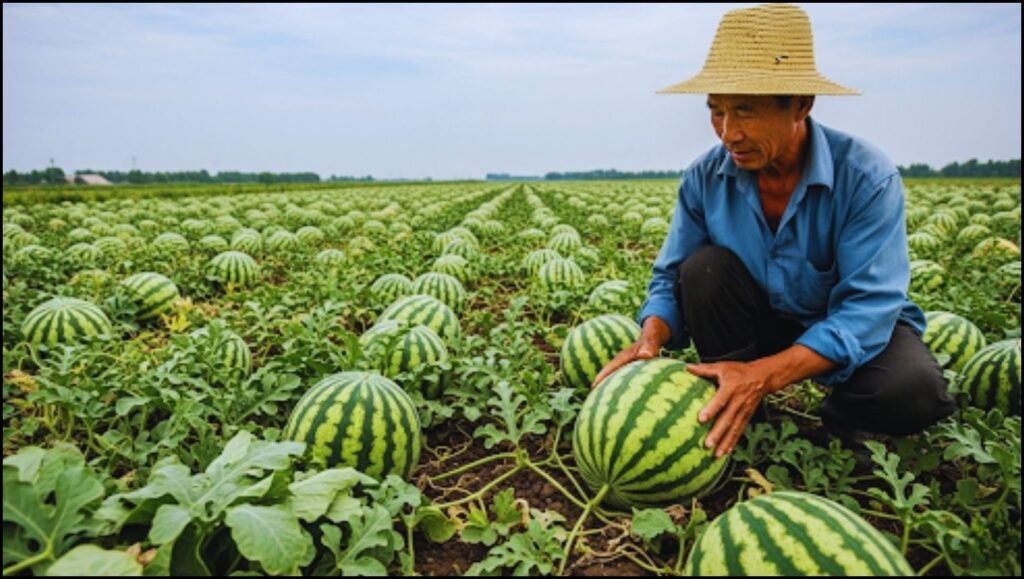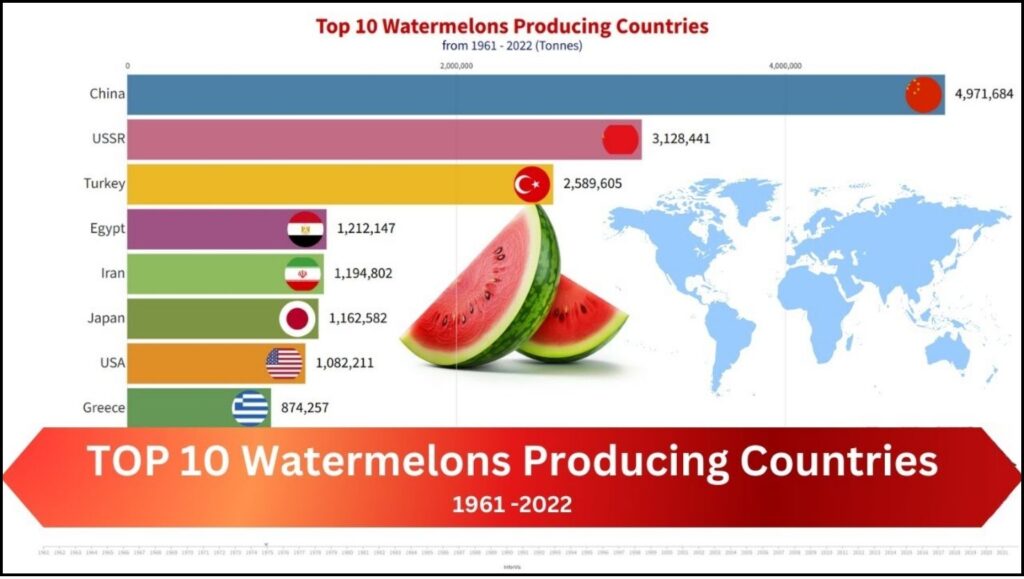China has solidified its position as the undisputed largest watermelon producer globally, consistently outstripping all other nations by a significant margin. The country’s immense agricultural output is a result of a combination of favorable climatic conditions, vast cultivation areas, and a massive domestic demand fueled by the fruit’s cultural significance. This production leadership highlights China’s influence in the global agricultural sector and its capacity to meet the demands of its large population.

The Scale of China’s Agricultural Output
The statistics underscore the sheer scale of China’s watermelon production. According to recent data from the United Nations Food and Agriculture Organization (FAO), China’s annual watermelon output consistently accounts for over 60% of the world’s total. For context, in a recent year, China produced approximately 60 to 61 million metric tons of watermelon, an amount that is more than twenty times larger than the output of the second-ranked country, Turkey. This production volume not only serves China’s immense domestic market but also positions the country as a critical player in global agriculture.
The top-producing regions within China are diverse, leveraging the country’s varied climate. Areas like the Xinjiang province are renowned for their ultra-sweet, high-quality watermelons, which thrive in hot days and cool nights. Meanwhile, provinces such as Hebei and Shandong are key suppliers to major urban centers like Beijing and Shanghai. This widespread cultivation ensures a steady supply of watermelon throughout the country’s extensive summer months.
Factors Driving China’s Watermelon Success
Several interconnected factors explain China’s dominance in watermelon farming. The country’s vast and diverse geography provides a wide range of suitable climates, from the tropical south to the temperate north. This geographical advantage allows for extended and multiple growing seasons. Furthermore, a substantial agricultural workforce and a long history of intensive cultivation techniques have been key drivers of success.
In addition to traditional farming methods, Chinese farmers have increasingly adopted modern agricultural practices. These include the widespread use of high-yield hybrid seed varieties, efficient irrigation systems like drip irrigation, and protective measures such as greenhouse farming and plastic mulching. These innovations help to increase crop yields, conserve water, and protect plants from disease, ensuring consistent and high-quality harvests.

A report from the agricultural intelligence platform Tridge noted that while China produces a colossal volume of watermelons, its global export market share remains relatively modest. This is primarily because the majority of the crop is consumed domestically. Watermelons are not only a popular summer fruit in China but also hold a cultural significance, symbolizing good luck and prosperity in various traditions and festivals. This strong internal demand ensures that the vast majority of the harvest is consumed within the country’s borders, limiting its role in the international fresh watermelon trade.
The Role of Watermelons in the Global Economy
While China may produce the most, other countries play important roles in the international watermelon market. Turkey, India, and Iran consistently rank among the top five producers, though their output is far smaller than China’s. Turkey and Spain, for instance, are major exporters to European and Middle Eastern markets, leveraging their geographical location and established trade routes.
According to data from the World Integrated Trade Solution (WITS), top exporters of fresh watermelons include Spain, Mexico, and the United States. Mexico’s proximity to the U.S. market makes it a significant supplier, while Spain’s production fuels the European Union. These countries specialize in cultivating specific varieties for export and have developed sophisticated supply chains to handle the logistics of shipping a bulky and perishable product over long distances. The global trade of watermelons is a complex network, but the production landscape is overwhelmingly dominated by a single nation.
Challenges and Future Trends
Despite its dominant position, China’s watermelon industry is not without challenges. Climate change, water scarcity, and soil degradation are significant threats. Researchers at institutions like the Chinese Academy of Agricultural Sciences are focusing on developing new, resilient watermelon varieties that are better adapted to changing environmental conditions. They are also researching sustainable farming practices to address issues of water usage and soil health.
These efforts are part of a broader global trend in agriculture to increase sustainability and improve food security. As climate patterns become more unpredictable, the ability to maintain and increase yields of essential crops like watermelon becomes a crucial priority for agricultural policy-makers and farmers alike.
The global market for watermelons reflects a clear dichotomy: a handful of countries produce the majority of the world’s supply, with one nation standing out as an agricultural powerhouse. As the world population grows and consumer preferences evolve, the dynamics of watermelon production will continue to be influenced by a mix of traditional practices, technological innovation, and environmental pressures. China’s continued leadership in this sector will depend on its ability to navigate these challenges effectively.
Australia Cornering the Market on Davidson’s Plum, a Native Superfruit in Global Demand
